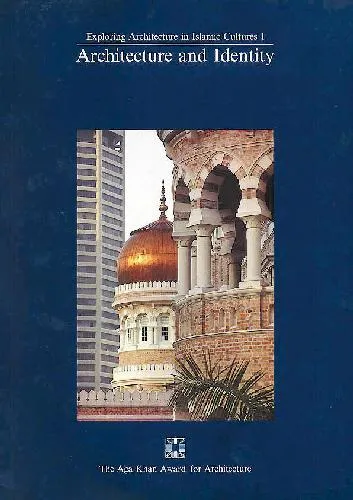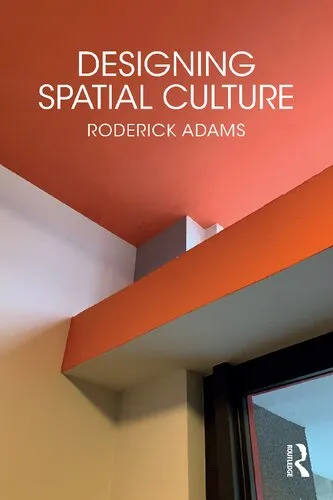Exploring architecture in Islamic cultures 1
4.5
بر اساس نظر کاربران

شما میتونید سوالاتتون در باره کتاب رو از هوش مصنوعیش بعد از ورود بپرسید
هر دانلود یا پرسش از هوش مصنوعی 2 امتیاز لازم دارد، برای بدست آوردن امتیاز رایگان، به صفحه ی راهنمای امتیازات سر بزنید و یک سری کار ارزشمند انجام بدینکتاب های مرتبط:
Analytical Summary
*Exploring architecture in Islamic cultures 1* serves as a meticulous and expansive examination of the architectural traditions emerging from the diverse societies shaped by Islam over thirteen centuries. It bridges regions, epochs, and stylistic schools—from the deserts of Arabia to the riverine cities of South Asia—allowing readers to grasp the profound interplay between religious beliefs, socio-political structures, and aesthetic innovation in Islamic architecture.
The book grounds its analysis in primary sources and archaeological findings, tracing how the foundational principles of Islamic art and design have evolved in different cultural contexts. Emphasis is placed on structural forms such as domes, minarets, courtyards, iwans, and gardens, and on the functional symbolism embedded in architectural ornamentation. These elements are not viewed in isolation, but as parts of a coherent cultural language.
Information about the exact publication year or any awards is unavailable due to no reliable public source specifying these details. Nevertheless, the scholarly rigor evident in the writing and the wide chronological and geographic scope make the book a valuable reference for academics, preservationists, and architects alike.
The analytical narrative is complemented by comparative studies across Islamic regions—North Africa, the Middle East, Persia, the Indian Subcontinent, and parts of Southeast Asia—highlighting shared theological motifs alongside localized solutions to climate, materials, and urban needs.
Key Takeaways
Readers will discover that Islamic architecture is not monolithic; it represents a vast array of regional adaptations unified by underlying spiritual and philosophical frameworks.
Key insights include the importance of geometry and symmetry as manifestations of divine order, the adaptive use of local materials and technologies, and the integration of spaces for communal gathering within design principles. Another important takeaway is the role of political patronage in driving monumental building programs that shaped the skylines of historic Islamic cities.
In revisiting historic sites and structures, the book emphasizes preservation and the ethical responsibilities attached to maintaining cultural heritage amid modernization pressures.
Memorable Quotes
“Architecture in Islamic cultures is the living script of faith written upon stone, brick, and space.” Unknown
“Every arch, every dome whispers stories of the civilizations it sheltered.” Unknown
“The beauty of Islamic architecture lies not only in its forms but in its dialogue with time.” Unknown
Why This Book Matters
*Exploring architecture in Islamic cultures 1* equips readers with a critical lens through which to appreciate, analyze, and safeguard Islamic built heritage in an age of rapid change.
By weaving together architectural analysis, cultural anthropology, and historical context, the book facilitates cross-disciplinary dialogue. It underscores the necessity for informed preservation policies and helps practitioners understand how intangible cultural values manifest in tangible architectural forms.
For urban designers, historians, and cultural policymakers, the book functions as both a reference and a call to action. It situates Islamic architecture within a broader global narrative, showing its relevance to contemporary sustainable design through vernacular wisdom and climate-responsive strategies.
Inspiring Conclusion
In closing, *Exploring architecture in Islamic cultures 1* opens a gateway into an intricate and deeply rooted tradition, inviting readers to perceive architecture as a cultural narrative as much as a physical reality.
Through its sweeping panorama across centuries and continents, the book reinforces how Islamic architecture unites diverse peoples under shared spiritual idioms while celebrating regional distinctiveness. Whether you are an academic, practitioner, or an engaged reader, this volume encourages you to immerse yourself in the richness of form and meaning, to share its insights with peers, and to discuss the pressing challenges of heritage preservation. The next step is clear: read closely, think critically, and contribute to the ongoing conversation about the future of Islamic architectural heritage.
دانلود رایگان مستقیم
شما میتونید سوالاتتون در باره کتاب رو از هوش مصنوعیش بعد از ورود بپرسید
دسترسی به کتابها از طریق پلتفرمهای قانونی و کتابخانههای عمومی نه تنها از حقوق نویسندگان و ناشران حمایت میکند، بلکه به پایداری فرهنگ کتابخوانی نیز کمک میرساند. پیش از دانلود، لحظهای به بررسی این گزینهها فکر کنید.
این کتاب رو در پلتفرم های دیگه ببینید
WorldCat به شما کمک میکنه تا کتاب ها رو در کتابخانه های سراسر دنیا پیدا کنید
امتیازها، نظرات تخصصی و صحبت ها درباره کتاب را در Goodreads ببینید
کتابهای کمیاب یا دست دوم را در AbeBooks پیدا کنید و بخرید
نویسندگان:
1030
بازدید4.5
امتیاز0
نظر98%
رضایتنظرات:
4.5
بر اساس 0 نظر کاربران
Questions & Answers
Ask questions about this book or help others by answering
No questions yet. Be the first to ask!













